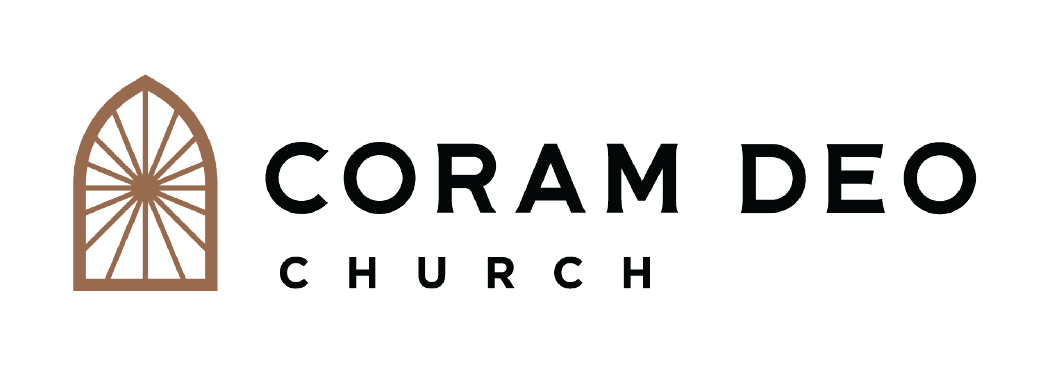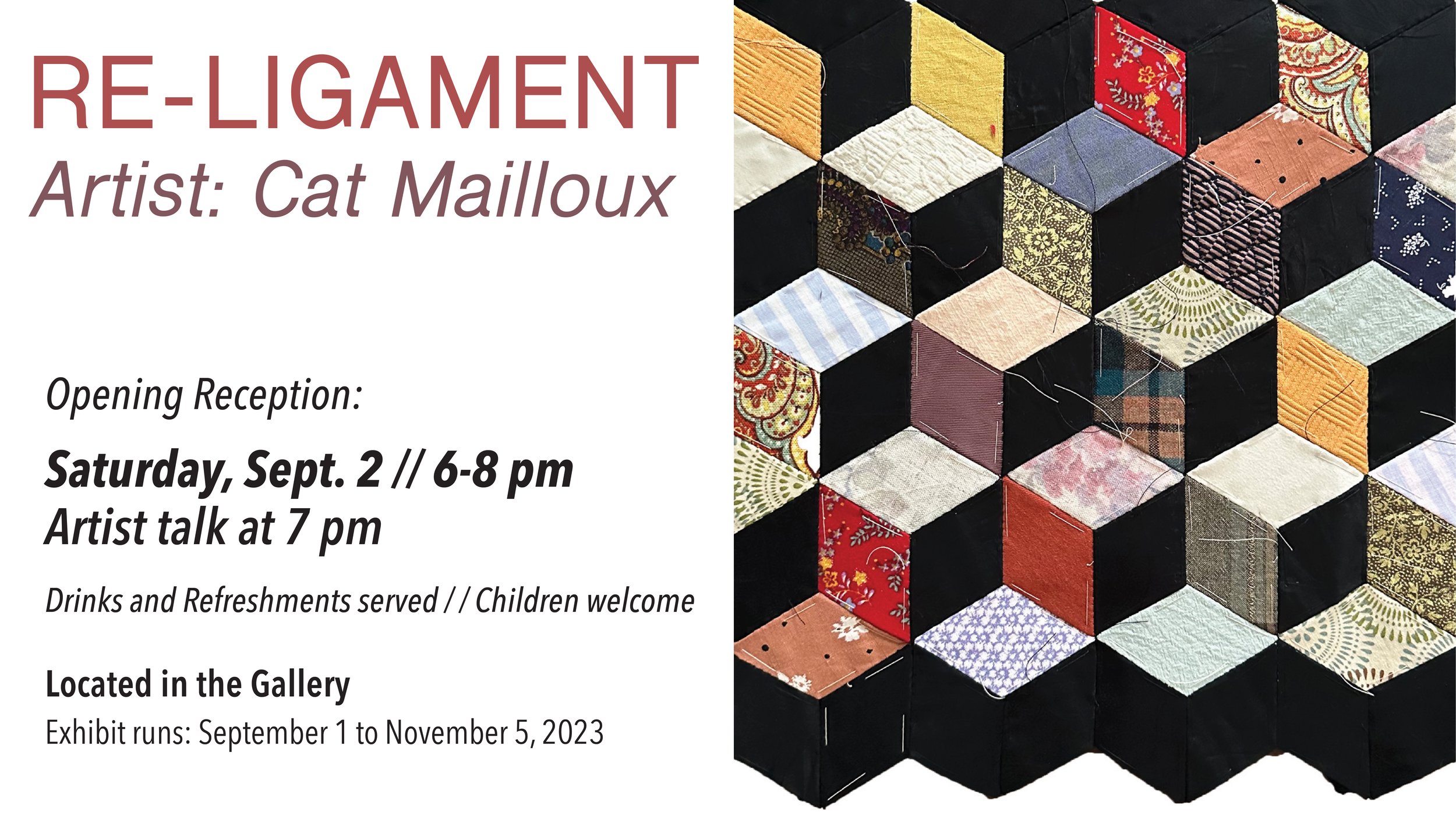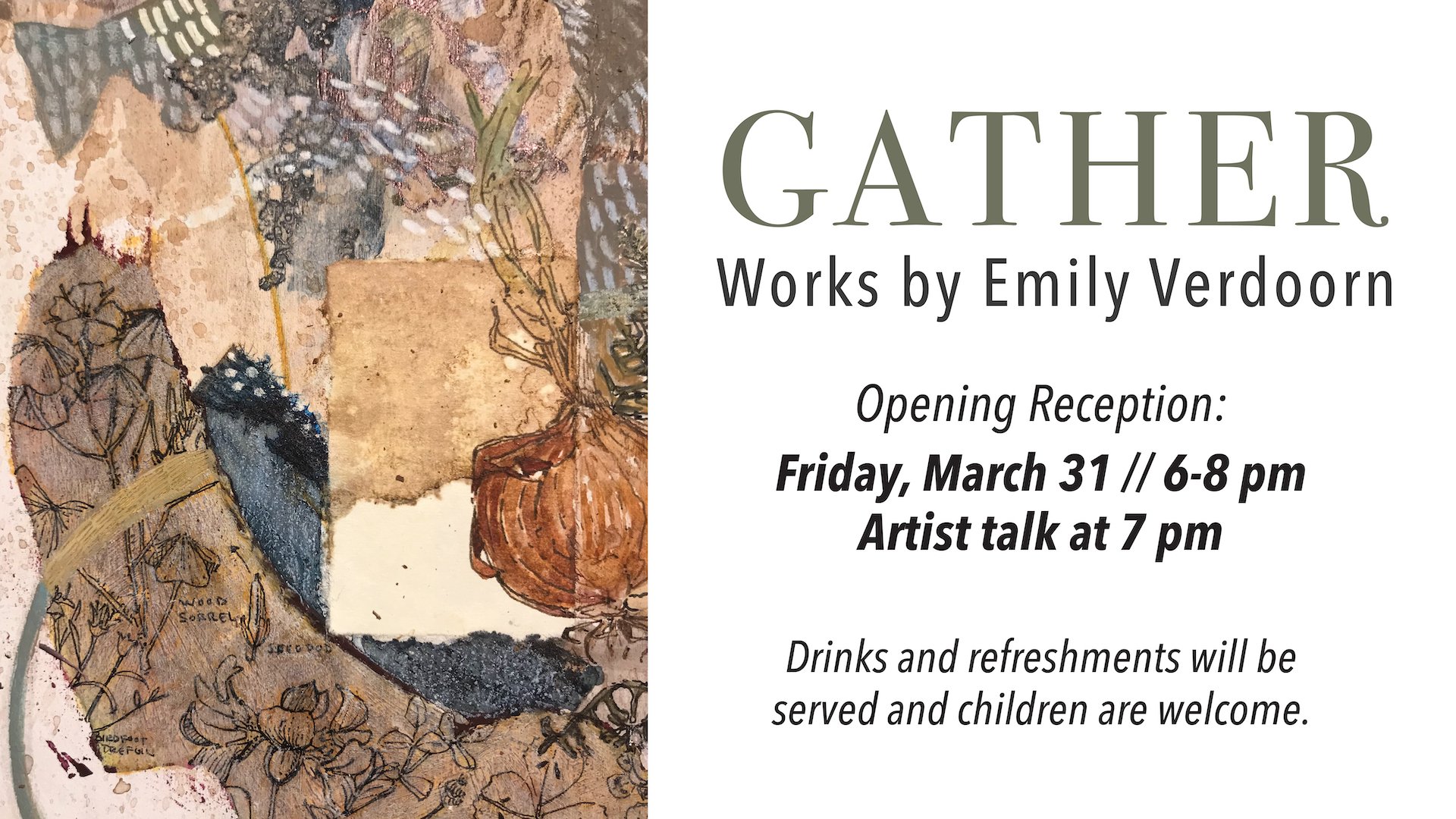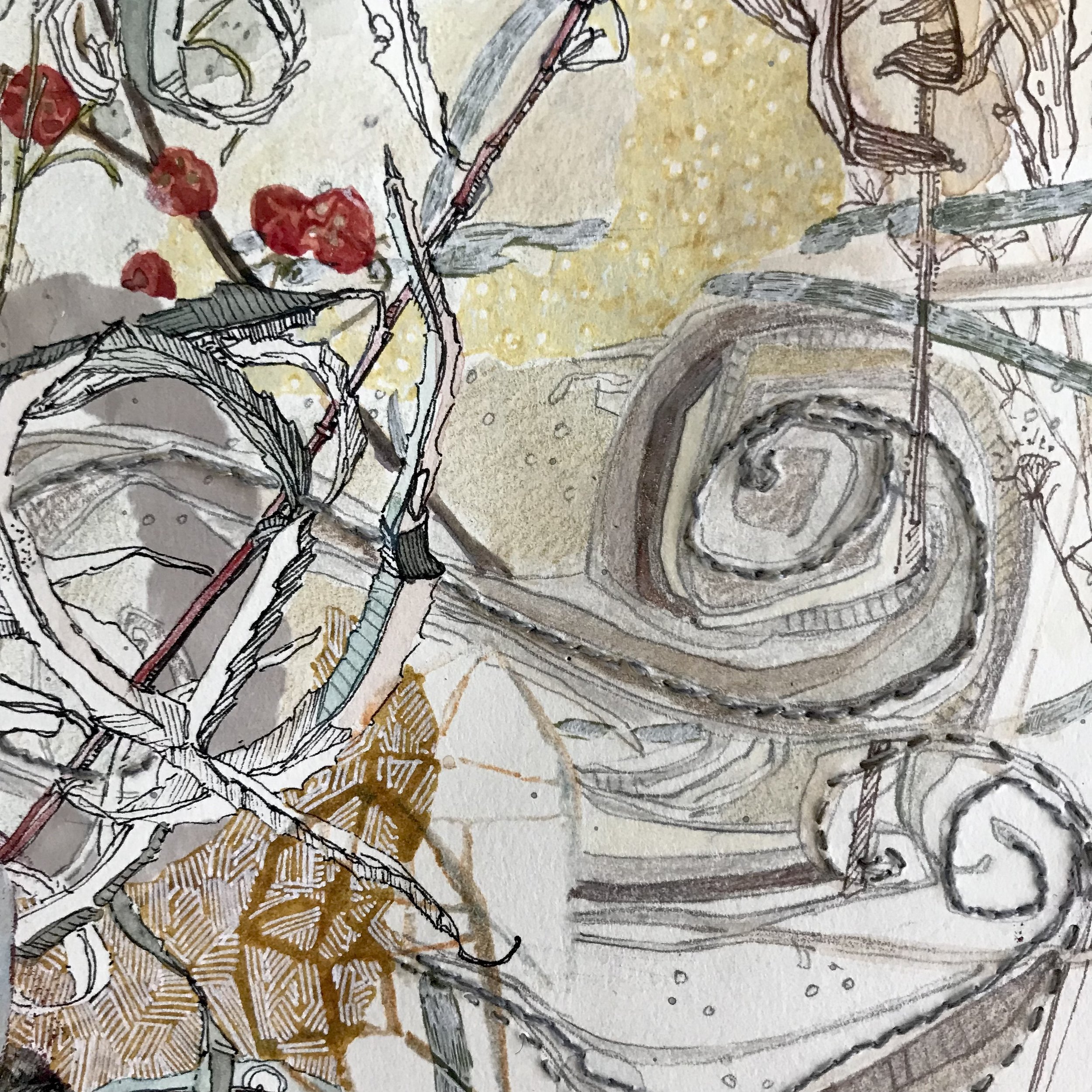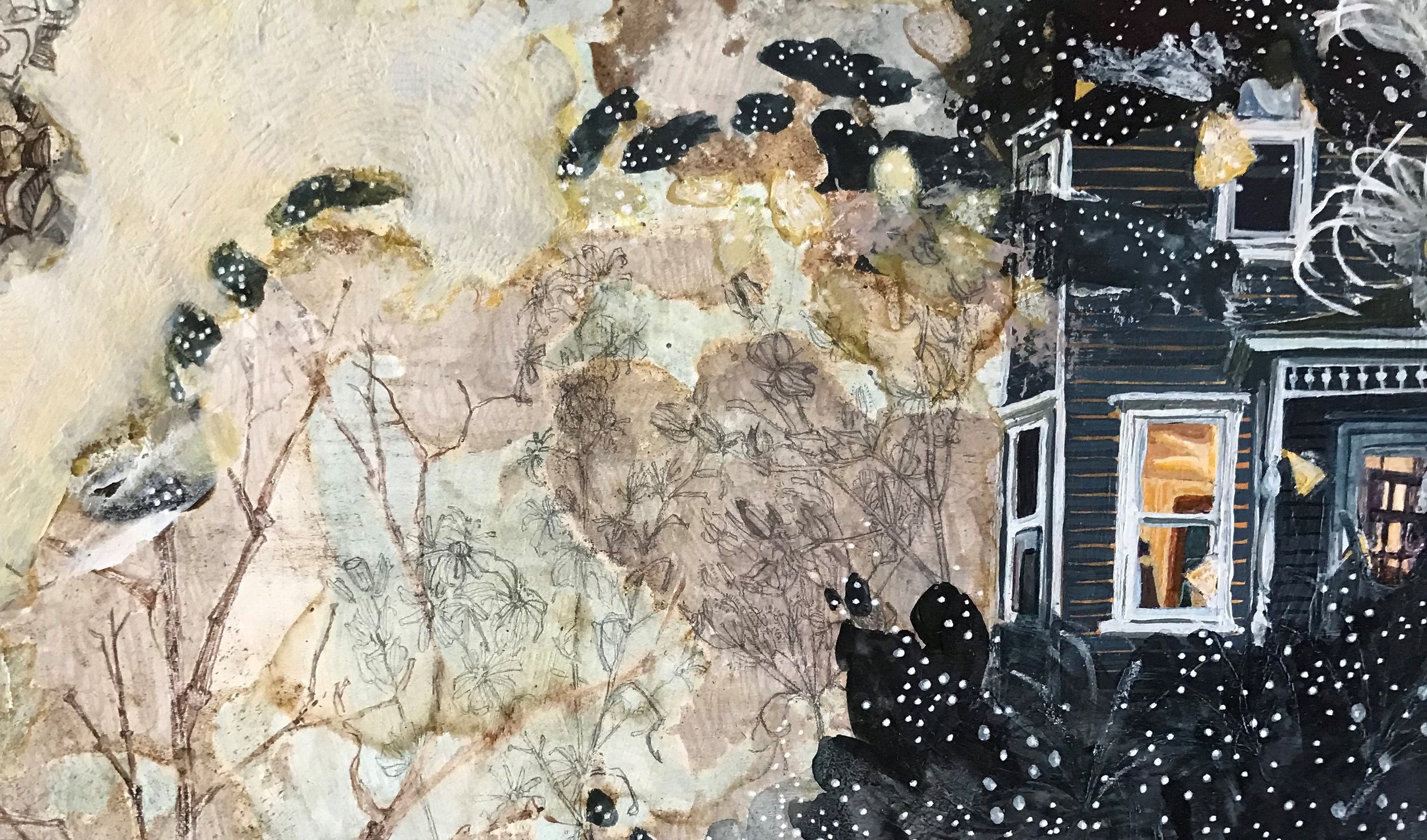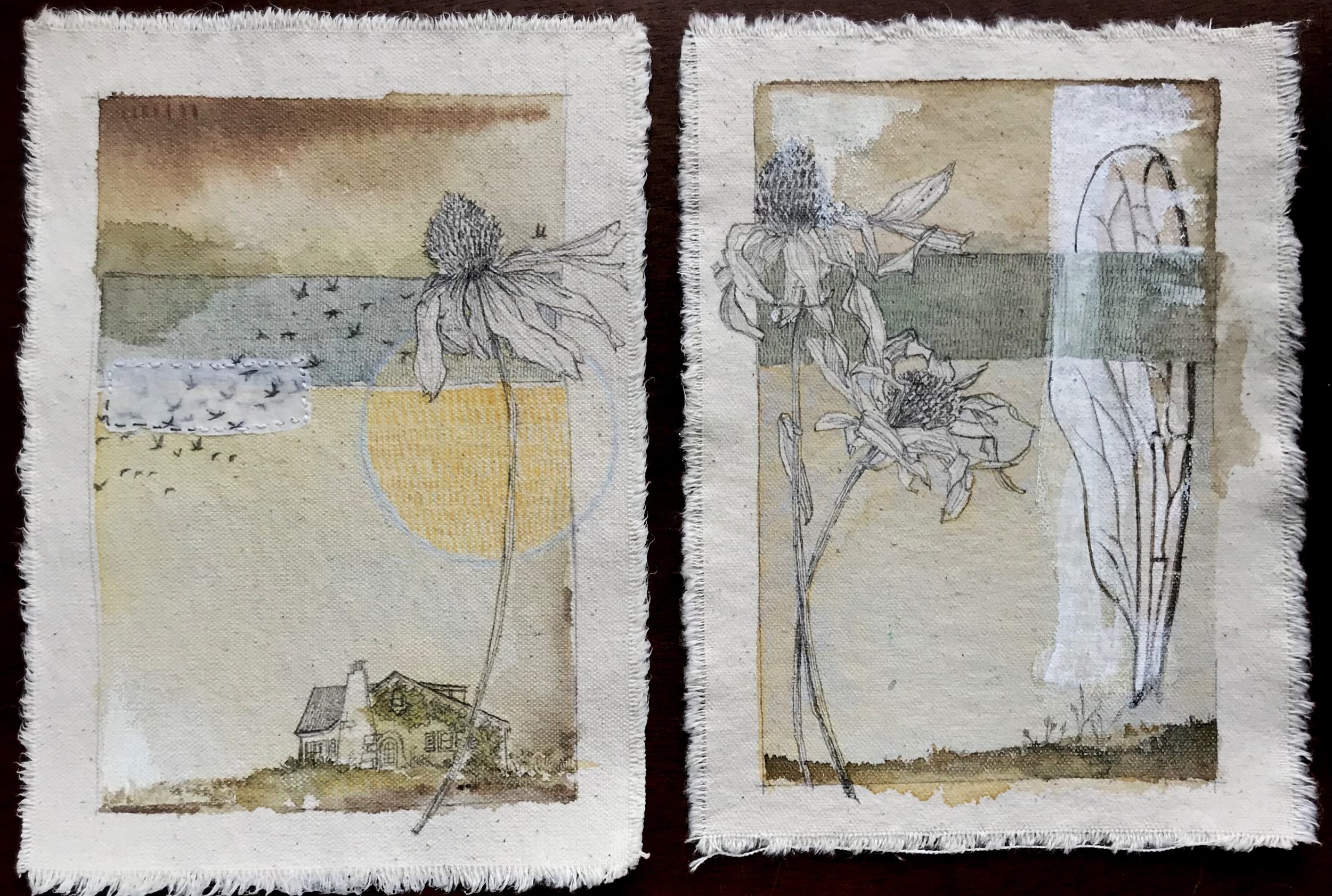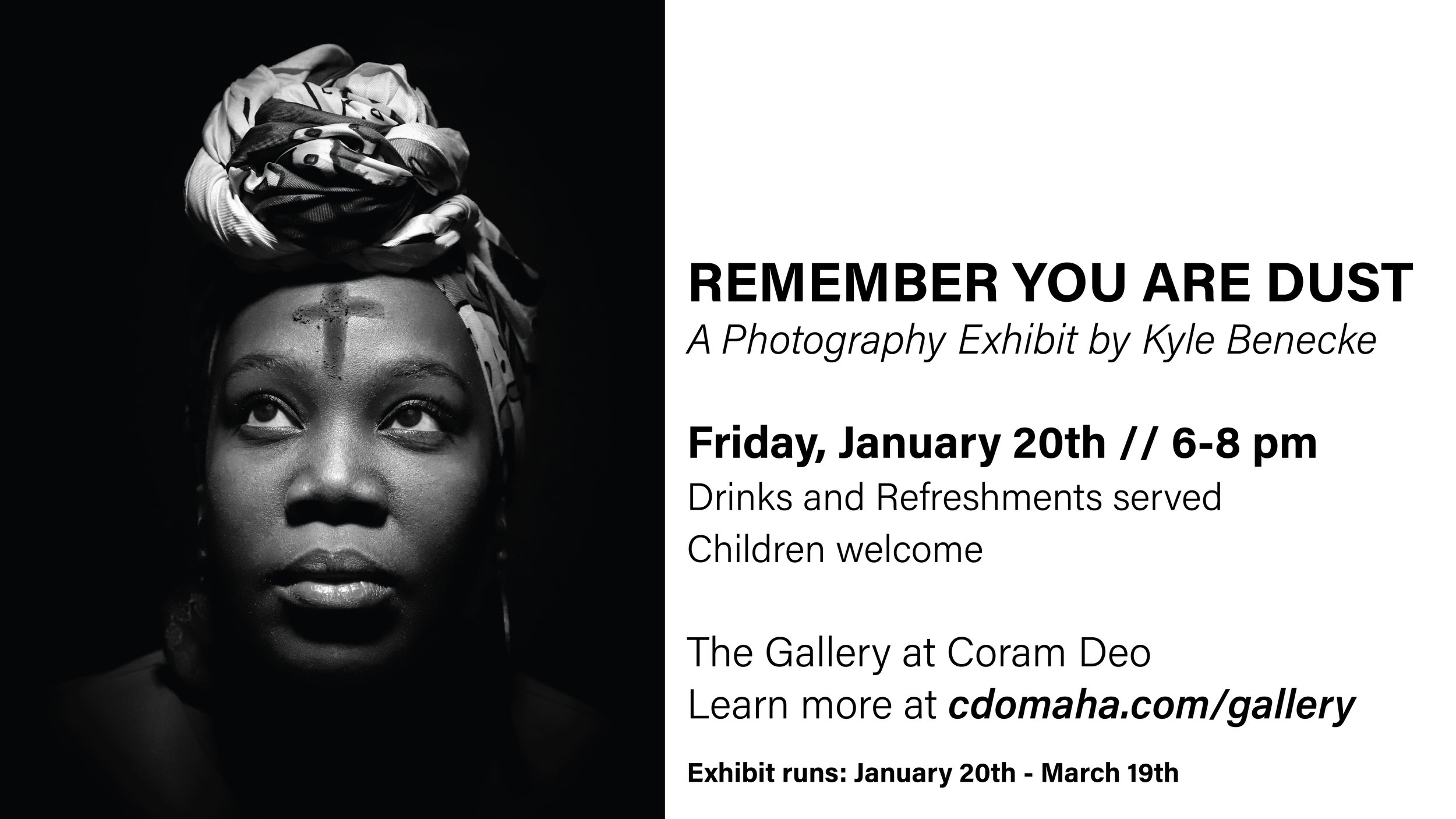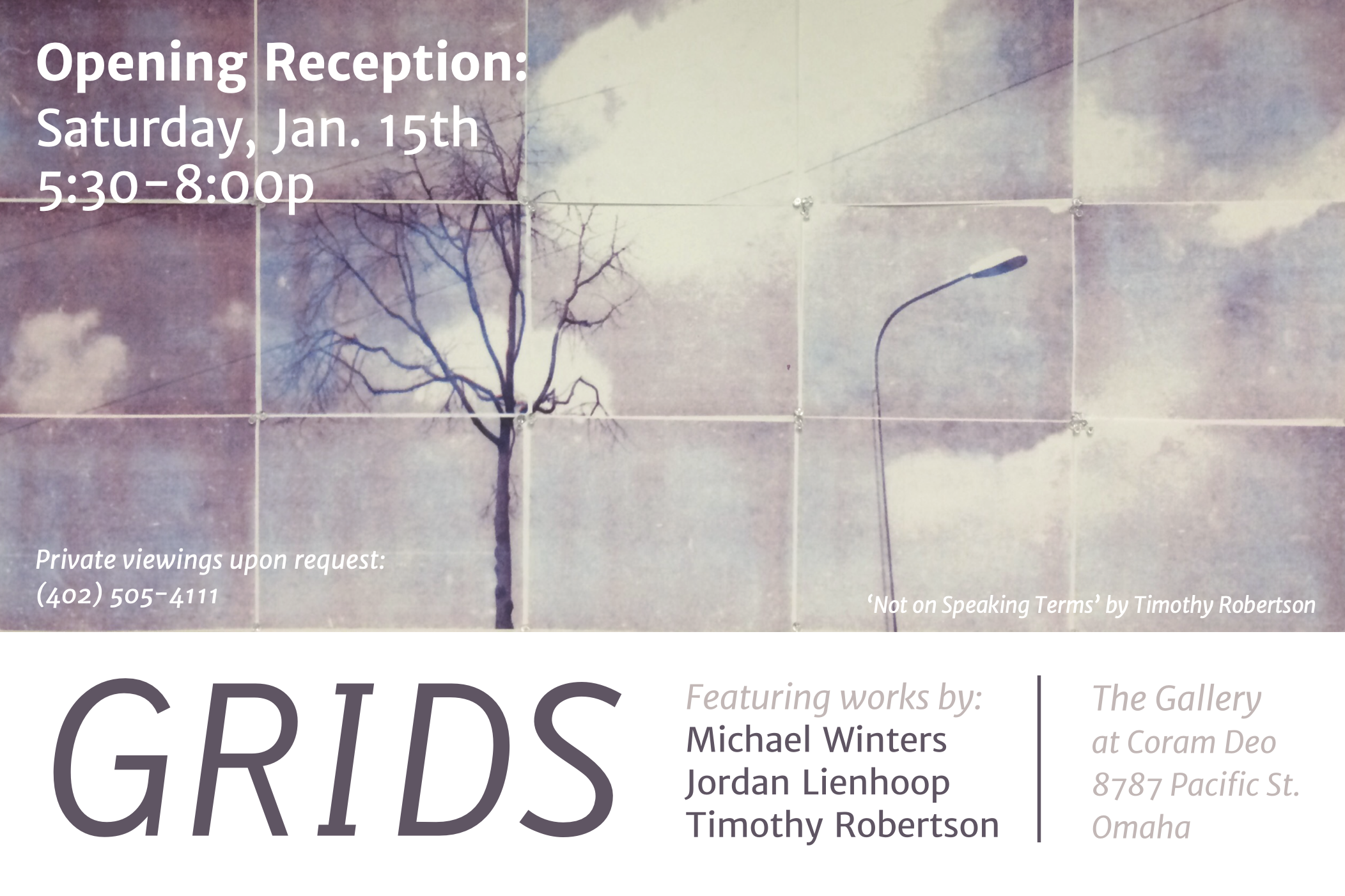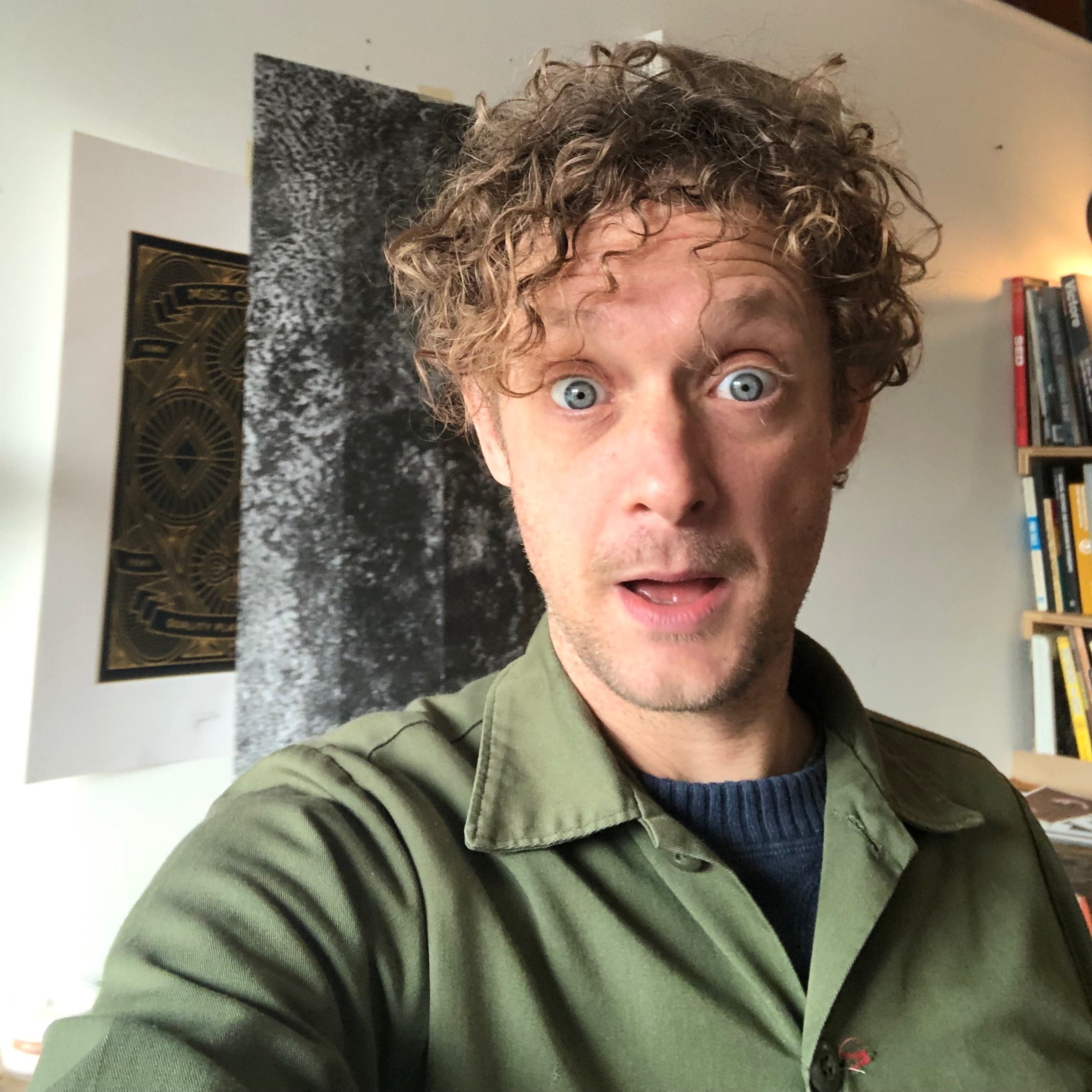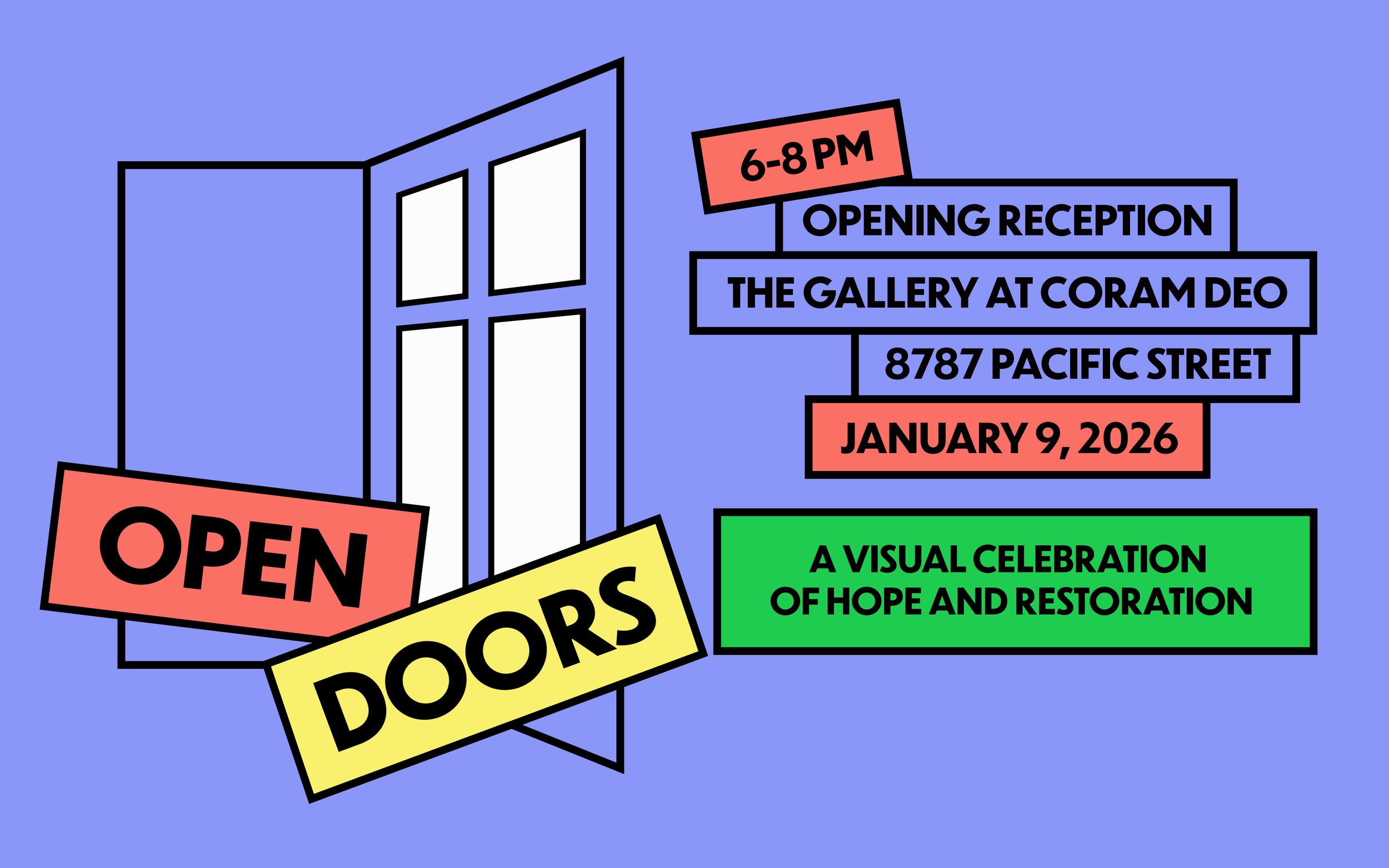
Open Doors
“Open Doors” — created by the men and women of the Open Door Mission — is a celebration of redemption, a visual chorus of second chances, and a moving reminder that with faith, support, and grace, restoration is possible.
Parched Land
Gallery Opening | Reception Details
When: Friday, Aug. 22 from 6-8 pm with an artist talk at 7 pm
Where: The Gallery at Coram Deo, 8787 Pacific Street, Omaha, NE 68114
Details: Drinks and refreshments will be served and children are welcome.
The exhibit is open M-F 9-4 pm and on Sunday mornings
Weekday viewing reservations are requested: 402-505-4111
Parched Land by Jerica christensen
I remember the days of old
I meditate on all that you have done
I ponder the work of your hands
I stretch out my hands to you
My soul thirsts for you like a parched land
Selah
Psalm 143:5-6
The Saint John's Bible
Gallery Opening | RECEPTION DETAILS
When: Thursday, Aug. 22 from 6-8 pm with Mike Kresnik sharing at 7 pm
Where: The Gallery at Coram Deo, 8787 Pacific Street, Omaha, NE 68114
Details: Drinks and refreshments will be served and children are welcome.
The exhibit is open M-F 9-4 pm and on Sunday mornings
Weekday viewing reservations are requested: 402-505-4111
The Saint John’s Bible | Exhibition Statement
The Saint John's Bible is the first completely handwritten Bible to be commissioned since the invention of the printing press. It took a team of artists and monks thirteen years to complete.
“The Saint John's Bible is a work of art and a work of theology. A team of artists coordinated by Donald Jackson in Wales and a team of scholars in Central Minnesota have brought together the ancient techniques of calligraphy and illumination with an ecumenical Christian approach to the Bible rooted in Benedictine spirituality. The result is a living document and a monumental achievement.
Back in the 1990s, Donald Jackson observed the monks of Saint John's Abbey processing with their Book of the Gospels for Sunday Mass, and he recognized the importance of "their book." To create a Bible that would capture the beauty and tradition of centuries of liturgy and carry it into the future—that is the vision that united a calligrapher in Wales with a group of Benedictine monks in Minnesota.”
Excerpt from The Saint John’s Bible website.
Altars of Reconciliation
Altars of Reconciliation | Exhibition Statement
Why would Native Americans believe in the religion of the invaders? This is a question the artists in this exhibition have been confronted with many times. As Indigenous people who are Christians, we sense a deep paradox when asked this question.
Why DO we believe in the Gospel of the invaders, the so-called “white man’s religion?” This is the internal struggle that Altars of Reconciliation chooses to address. Told within the context of a history of deeply ingrained Christian practice among generations of Native peoples, we face the tensions created in our lives by the faith we practice. Through this work, viewers experience contemporary, Native-themed ‘altarpieces’ of sacred art, personal in their stories but universal in their struggle with eternal questions.
Our intent for this show specifically is to explore a theme rarely confronted in the art world: the practice of Christianity among Native peoples. There is and continues to be a long, rich and layered history of Native churches and Christian tradition, but there is an equally long sense of tension and conflict among tribal peoples about questions of faith. Often framed as a ‘Christian vs. Traditionalist’ dichotomy, the real story is not nearly so clear-cut. By facing our own faith struggles and transformations through these ‘altarpieces,’ our desire is to bring about healthy discussion and awareness of how Christianity has played a historic (and continuing) role among our Native peoples, and in the bigger picture, to engage people in thinking about the role of faith in their own lives.
Artist Statements | Erin Shaw, Tony A. Tiger, Bobby C. Martin
Erin Shaw
My name is Erin Shaw.
I am a citizen of the Chickasaw Nation and a seventh-generation follower of Jesus. As long as I can remember, I’ve had one foot in two worlds. It’s been the work of my life to live in that tension and as best I can, understand and reconcile it.
I am a collector of stories and have been since I was a child. I can remember finding these stories behind the old Native American schoolhouse on our family land, on the bus to Sunday school and in countless books. Some of these stories are deeply embedded in the fabric of who I am. They are the raw material from which I’ve built my life.
As I’ve sought to understand what it means to be Native American, I’ve discovered that being Indian is not in opposition to my faith. My faith is enriched, deepened and more whole because I am Native American.
I am a living altar of reconciliation.
Erin Shaw
May 2022
Tony A. Tiger
The art for Altars of Reconciliation began to take shape long before I ever decided to create art. My tribal ancestry of the Muscogee Creek, Seminole, and Sac and Fox tribes has given my existence a powerful narrative that predates America. My family has been drawn to the message of the gospel before Oklahoma’s statehood, the generations after me have their names written in the Lamb’s Book of Life. My life is fueled by the belief that human beings are more than mere reflections in a mirror; we are soul and spirit. I am thankful to have found my calling as an artist, with mindful colleagues in Erin Shaw and Bobby C. Martin to express our Christian faith through Altars of Reconciliation.
I enjoy working in series, moving from series to series keeps me engaged. I found I get a little bored if I don’t change art forms. I may work on five or more pieces at one time, and move from painting to printmaking and three-dimensional conceptual work within a short time span. One of the series in Altars of Reconciliation is titled The Grand Weaver after a book I read by the late Ravi Zacharias. The content of the book best expresses the narrative of the interweaving of time, place and influences that God can direct in an individual’s life. The series utilizes the interweaving of printmaking media on paper—etched photographs, serigraphy, relief, and hand-colored stencils of tribal designs. The pieces narrate the story of my transformation and the members of my family as indigenous believers in the gospel of Jesus Christ.
Another series in the exhibition explores identity. Superimposed Identity is a series of paintings that have superimposed designs covering the picture plane with brilliantly painted abstract color combinations. The paintings communicate the wonder and complexity of identity—nationality, gender, cultural beliefs, and ethnicity. It’s no wonder human relationships are challenging. The Almighty has created humankind as complex, wonderful creatures to respond to life, to respond to Him. Christ is our example when related to each other—He alone knows how to meet our deepest need to know. He has answered life’s great unknowns and given peace to the chaos in our soul—how we got here, why we are here and where we are going. Scriptures from the Bible have satisfied my soul. History says I should not be a Christian, my soul says rest. Those who employed Christian organizations and churches as a means to end tribalism in North America did so without a true knowledge and faith in its Author. The paintings look chaotic at first glance, but look closer and you will see there is order amidst the chaos.
The third series represented in the exhibition, Transformation, is inspired by the metamorphic process of the beautiful butterflies that crisscross my backyard in Oklahoma. Each artwork encompasses the transformational process of certain species—from egg, larvae to adulthood. Each piece has three panels—two painted, one wrapped with printed paper. The small painted top panel represents the caterpillar, the wrapped paper depicts the chrysalis, and the largest panel symbolizes the flight of the butterfly. We can observe life-enhancing metaphors and symbols in nature that are for humanity’s benefit, if one is able to see. Muskoke and Woodland designs are interwoven into the series of conceptual pieces, reminding the viewer that every tribe and people are created in the image of God. Many Indigenous cultures believe in Creator God, and the Transformation series is a testament to the creative wonder of the Almighty, and the love He has for humanity. As an Indigenous North American I have good reason to hate those whose policies and actions removed my ancestors from tribal homelands and wiped out whole tribes for their benefit—but because I have allowed Christ to save me and transform me, I am reconciled to God and humanity.
Mvto,
Tony A. Tiger
Bobby C. Martin
...in Christ God was reconciling the world to himself, not counting their trespasses against them, and entrusting to us the message of reconciliation. Therefore, we are ambassadors for Christ, God making his appeal through us. We implore you on behalf of Christ, to be reconciled to God.
II Corinthians 5:19-20
As far back as I can remember, the Mvskoke side of my family has been deeply immersed in Native Baptist churches. Our family had a camphouse at Deep Fork Hillabee Baptist Church near Checotah, Oklahoma, and some of my earliest memories are of Easter celebrations and Sunday feeds under the church arbor. Somewhere in my later childhood, that strand was broken—only to be reconnected much later by my coming to faith in Jesus Christ as an adult.
While there is no denying that many horrific trials were inflicted on my ancestors in the name of Christ, that to me has no relation to the true and very real teachings of Christianity. The power, mercy and peace that comes from faith in a person, Jesus Christ, who came to take away the sin of the world is a compelling personal experience that transcends cultural boundaries and tradition. Added to that, knowing that I share that same faith with my ancestors only deepens the meaning and love for our Creator God.
I have been blessed to have been surrounded and supported by strong women throughout my life. The people in these drawings are my spiritual icons—not icons that I worship, but ones that I remember fondly as faithfully looking out for my spiritual well-being, whether I knew it or not. These ‘icons’ are dedicated to my grannies and aunties who were faithful in praying for their families, thankfully including me. My goal is to follow their pattern for my own children and grandchildren. My foremost desire through these artworks is for our meager efforts to be a fragrant offering to our Creator, and also to bring about healthy discussion and awareness of how Christianity has played a historic (and continuing) role among our Native peoples, in order to engage viewers in thinking about the role of faith in their own lives.
Bobby C. Martin
Martin Mountain Studio
May 2022
Seeing Things by Timothy Henze
Gallery Opening Reception Details
When: Friday, Jan. 19 from 6-8 pm with an artist talk at 7 pm
Where: The Gallery at Coram Deo, 8787 Pacific Street, Omaha, NE 68114
Details: Drinks and refreshments will be served and children are welcome.
The exhibit is open M-F 9-4 pm and on Sunday mornings
Weekday viewing reservations are requested: 402-505-4111
The exhibit runs from Jan. 19 to March 17
Timothy Henze | Exhibition Statement
Truly I tell you, anyone who will not receive the kingdom of God like a little child will never enter it. Luke 18:17
Your eye is the lamp of your body. When your eyes are healthy, your whole body also is full of light. But when they are unhealthy, your body also is full of darkness. Luke 11:34
Years ago, I wrote the following purpose statement for my photography.
Why Photograph? To practice the spiritual disciplines of seeing differently and freely experiment with seeing differently; finding order in chaos; uncovering beauty in the simple, unexpected, forgotten and discarded; recognizing God’s hand in what is overlooked and often missed; revealing design in that which is thought to be random; knowing and understanding a place by visual exploration and documenting individual moments of that exploration.
Photography for me is very much about exploration and discovery. When I go out with my camera, I pick a place, a street, a neighborhood, or area of the city and commit to it for a period of time and apply the self-imposed principles above.
The unique quality of the medium of photography is the ability to freeze a moment in time as it presents itself before the camera. Nothing I see in any given place or time will ever look the same again. The light changes throughout the day and then throughout the year as the sun moves to different positions and casts different shadows, highlighting different colors. The weather changes and objects are moved, added, and removed, changing what is before our eyes. How often do we as adults hurry by in our cars with eyes locked on the road or walk down the street either hurried through crowds or traffic or glued to our cell phones unaware of the ever-changing details before our eyes? We, in the busyness of our world, are mostly oblivious to the wondrous details of creation that are right before our eyes every moment of every day. My photography becomes for me a personal meditation to keep my eyes and perhaps the eyes of others healthy and aware, to stave off the boredom that creeps in and continuously renew perspectives to always savor the wondrous and constantly changing variety that is the visual banquet of God’s creation; to keep awe and wonder alive so that we may all enter the Kingdom of God like children.
The process of discovery does not end after the shutter is pressed. Landscape photographer Lewis Baltz said:
“Anyone can take pictures. What’s difficult is thinking about them, organizing them, and trying to use them in some way so that some meaning can be constructed out of them. That’s really where the work of the artist begins.”
In college, photography students were taught to intentionally take time and live with their photographs for a few reasons. First, it is possible to get unrealistically enamored with an image in the photographing, developing, and printing stages so that time is required to break that bond and enable one to see if an image really stands out. Similarly, time will cause one to get bored with the truly mediocre images and filter them out. Lastly and most importantly time allows a photographer to learn from their photographs - to see patterns, ideas and issues in their images that they could not see before. Often the most poignant themes are the ones seen while editing photographs after they are taken.
I am a person who is naturally drawn to connection. I look for patterns and relationships that tie people and things together. When speaking to new people I look for common ground that creates starting points for empathy, ultimately believing that all people and things are connected and all things happen for a reason. This was confirmed as my number one strength when I completed the Gallup CliftonStrengths assessment for a leadership seminar. Connectedness is described as “faith in the links between all things ... there are few coincidences and that almost every event has a reason (Strengths Based Leadership: Great Leaders, Teams, and Why People Follow, Tom Rath, Gallup Press, 2008, p. 139).” Through my experience of having assembled previous portfolios and curated previous exhibits of both my own work and the work of others, I have found I love finding connections tying work together or connections providing some logic or purpose to the inclusion and arrangement of images.
After assembling a show of my work for the 402 Art Collective at Hardy Coffee in March 2016, I started putting together groups of ten images that complement and expound each other. I found, after assembling 17 collections of 10 images — eight of which are included in this exhibit, the images are stronger visually as a group than individually. Presenting these images linked together through some visual component helps me in my search for the foundation of a divine aesthetic vocabulary, acknowledging formal visual elements as the creative building blocks of a grand designer. Repetition, in my “connectivity-wired” brain, implies intentionality. Repeating patterns within abstractions, serving as distillations of the real world, reveal a divine serendipity pointing to the truth that there is no design by humans or nature that has not been first willed by the hand of God through Jesus Christ regardless of any human awareness of that will.
For in him all things were created: things in heaven and on earth, visible and invisible, whether thrones or powers or rulers or authorities; all things have been created through him and for him. Colossians 1:16
Artist Bio
Timothy Henze was 13 years old when he developed his first roll of 35 mm black and white film in his basement with his dad. In high school, he was encouraged by a favorite teacher to pursue studying photography in college. After school, he worked for Agri-Graphics, a nationally known photographer of dairy cattle in their black and white print darkroom. Timothy studied photography at Columbia College Chicago in the south Loop, graduating in 1989. For three of his four years at Columbia College, Timothy worked as a student intern at the Museum of Contemporary Photography. In the summer of 1988, Timothy was awarded the Kodak Professional Photography Scholarship at Columbia College. His first solo exhibit was in March 1989 at the Woodstock Opera House in Woodstock, Illinois. For an independent study project in Museum and Curatorial Studies with the museum director, Timothy curated the Columbia College End of the Year Student Juried Exhibitions for art and photography and curated the Graduate Thesis in Photography Exhibition.
After graduation, Timothy moved to Denver to work as an assistant in a photography gallery in the Cherry Creek area. After working there for one year Timothy left to begin preparation for pastoral ministry at the Iliff School of Theology, a United Methodist seminary in Denver. Timothy graduated with his Master of Divinity and was ordained to pastoral ministry in the Rocky Mountain Conference of the United Methodist Church in the summer of 1993. The bishop appointed him to serve two rural churches 20 miles outside of Great Falls, Montana for one year. He was then appointed to Scobey and Opheim United Methodist Parish in the North East corner of Montana where he served as solo pastor for eight years. While in Scobey and Opheim, Tim continued to photograph the landscapes in the area and began the transition to digital photography. After Scobey and Opheim, Timothy left pastoral ministry and moved to Jackson, Wyoming where his parents were living. A small church south of Jackson called him to preach on a part-time basis for a few years while working full-time at the Jackson State Bank & Trust. He continued to do photography in his spare time and took on a few freelance photography jobs in Jackson. With the sale of the bank in 2008, Tim followed a friend to First National Bank of Omaha in Nebraska.
In Omaha, Tim began photographing various areas around the city. 2011 brought Kim Elliott into his life and they married in 2014. Tim organized and prepped for a solo exhibit of photographs at the 402 Gallery at Hardy Coffee in Benson in March of 2016 at about the same time that he started working for Heartland Family Service. Ian was born in 2016 and Tim found he loved photographing Ian so much he decided to start For Real Baby Photography as a side hustle photographing children and families. He continues to get several clients a year as an incentive to keep it going. Tim held positions as an Early Childhood Specialist and a Housing Navigator assisting homeless men at Open Door Mission before leaving Heartland Family Service in October 2023. Tim continues to photograph all around the Omaha/Council Bluffs Metro Area. In addition to photography, Timothy loves to play harmonica (especially with the worship team), hike and backpack in the mountains, downhill and cross-country ski, and cheer on the Chicago Cubs. Tim and Kim have been attending Coram Deo Church since they were married and have been members since 2017. He is always looking for opportunities to share his photographs.
Picturing Mary by Michelle Arnold Paine
Gallery Opening Reception Details
When: Friday, Nov. 10 from 6-8 pm with an artist talk at 7 pm
Where: The Gallery at Coram Deo, 8787 Pacific Street, Omaha, NE 68114
Details: Drinks and refreshments will be served and children are welcome.
The exhibit is open M-F 9-4 pm and on Sunday mornings
Weekday viewing reservations are requested: 402-505-4111
The exhibit runs from Nov. 10 to Jan. 14
Michelle Arnold Paine | Exhibition Statement
The mother of Jesus has been a central figure in Western art for centuries, though there has also been debate about how important she should be for Christians. In the three years I studied, lived, and worked in Italy, I found Mary and Eve ever-present as I interacted with Renaissance art, medieval texts, and the rhythms of liturgy and daily Italian life.
This work in this exhibit takes as its starting point these archetypal figures, translating ancient metaphors into a contemporary context. How does one represent Mary in the contemporary world without seeming kitschy, sentimental, or even idolatrous?
Advent is a season of waiting. In our part of the world, after the leaves have fallen and the days grow shorter, it is a time of darkness, void of new life. The truth, beauty, and purity of God’s love seem to be in shadow. Light breaking through darkness is an apt metaphor for the struggle of my own experience to know Christ, who came into the world through the humility and obedience of his mother Mary.
In the midst of the desert and darkness of our world, Mary listened and opened her heart to receive God’s guidance and love so completely that she became one with the Holy Spirit and conceived life in the moment of The Incarnation. Through her obedience to God’s call (though it meant social catastrophe for herself and her family), she became the moment of Dawn for all humanity, the bearer of The Light for all of us.
Mary, as she opened herself to the Holy Spirit, became the threshold between heaven and earth. Through her, God came to earth in the Incarnation, and through Christ humankind may enter heaven. These images of gate, stairway/ladder, and dawn have been part of both Eastern and Western Christian traditions for more than 1000 years. My paintings, drawings, and prints use the same images but in a contemporary context to reflect this idea of a threshold between heaven and earth.
Artist Bio
While living and working for a study abroad program in Orvieto, Italy for three years, Michelle Arnold Paine found her vocation as an artist and also a connection to history and tradition. Images of the Annunciation held particular fascination. Through her own spiritual encounter with Mary, she began to explore painting Mary from a contemporary viewpoint.
She returned to the U.S. to complete a Post-Baccalaureate Certificate from the School of the Museum of Fine Arts in Boston and then an M.F.A. from the University of New Hampshire. She taught Drawing, Painting, and Design for seven years at various colleges in New England.
She has exhibited extensively in group shows and juried shows in commercial, community, non-profit, and university spaces. Her work has been published in many publications that seek to explore elements of the divine: Evangelism and Culture, Christianity Today, Ruminate Magazine, Edge of Faith, CIVA’s SEENJournal, Dappled Things, Worship Leader, Imaginatio et Ratio and Intruding Upon the Timeless, a collection of essays by Greg Wolfe.
In addition to numerous private collections across the U.S., her paintings can be found in the collection of the Valparaiso University Chapel, Indiana, Rivier College, New Hampshire, and Gordon College, Massachusetts. She lives in northwest Ohio with her husband and two daughters.
Re-Ligament by Cat Mailloux
Cat Mailloux | Exhibition Statement
Re-ligament is a meditation on the root word of religion, re-ligio, meaning to re-ligament or reconnect. A ligament is a fibrous tissue that connects cartilage and bone, allowing a body to move. Re-ligament is a series of large and small quilts utilizing techniques of traditional and improvisational patchwork, applique, and embroidery. Layered like drawings, they combine and explore the logic of stained-glass windows with quiet vignettes of domestic life—the shapes of windows, shadows cast onto walls, and light filtering through trees on neighborhood walks. Together, they form a liturgy of the ordinary, finding the connectivity of the every day and imparting divine grace.
The quilts form an attempt to visually re-ligament, formally employing the motif of black, in outlines, shapes, and overlays meant to mimic the linework of the lead between pieces of stained glass. Toggling between organic shapes and repetitive geometry, they stretch the limits of traditional patchwork. The quilts reflect the exuberance of light, contemplations of the night, and the tenderness of stitches.
Artist Bio
Cat Mailloux’s textile practice is focused on quilt making, pursuing connections between the visual language of churches, cathedrals, and domestic spaces that slowly bleed their way into imagined and limitless landscapes, exploring questions of the infinite through material. Mailloux is currently based in Columbus, OH, and serves as an Assistant Professor of Studio Art at Cedarville University. She holds an MFA in Sculpture from Ohio State University and a BFA in Sculpture and Art Education from the University of Wisconsin-Eau Claire. Her visual work has been exhibited in galleries across the country including Women Made Gallery in Chicago, Illinois, Skylab Gallery in Columbus, Ohio, and Coram Deo Gallery in Omaha, Nebraska. She has participated in residencies at Vermont Studio Centers, The Columbus Printed Arts Center, and Mary Sky.
Mailloux makes quilts, what she thinks of as layered and labored drawings in found color and material. They are made from old and thrifted clothing, mostly worn denim, that carry the faint memory of the bodies that wore them. The making of a quilt is grounded in logic, bound and subject to invisible, omniscient rules of how things must fit together. The image is embedded within the material; the quilt is both composition and architecture. As color shifts across its surface, both advancing and receding in space, geometry gives way to atmosphere.
Her practice as a visual artist extends into community work as a teaching artist in Columbus, where she runs the program Sewing Lab, which offers free sewing classes and workshops for children and adults in the Columbus community.
Gather by Emily Verdoorn
I like to think of this work like a web or nest. Over the past several years I have been collecting fragments and pieces, glimpses and flashes from my day to day life. These are woven together from seasons in the year and seasons in myself: a kind of palmiest of marks, images, textures, colors, and materials. As I find myself pushed to personal, interpersonal, and environmental fragmentation and isolation there is a true and beautiful voice calling us toward affection, attention, integration, care, and dependence. For me this work is a way to pay attention, to grow in affection, to see the world charged with the presence of Christ, but I hope they also begin to form a context, perhaps a place to belong.
Learn more at https://www.emilyverdoornstudio.com.
We Wait | Advent 2022
This advent season the Gallery will host a very special show entitled, “We Wait,” featuring work made by you -- the people of Coram Deo.
We invite you to begin meditating on the Advent season as the Summer comes to an end & Fall begins in hopes that you are inspired to create visual art, poetry, or original music.
Works shared in the advent show can reflect any themes related to the advent season: faith, hope, birth, promises kept, the nativity, light in darkness, peace, etc.
We ask that each person submit no more than two pieces for display. All works can be dropped off at the Coram Deo offices between Nov. 6 – Nov. 13, 2022.
Kelly Kruse
Kelly is a multidisciplinary artist and curator whose practice encompasses visual art, writing, and the performing arts. She creates work that illuminates the beauty and complexity of scripture, theology, and the human experience. Her artwork has been exhibited across the United States and is featured in collections around the world. She is curator of the Four Chapter Gallery. In addition to her work in the visual arts, Kelly holds a masters degree in vocal performance with an emphasis in opera studies from Indiana University. She has over twelve years of classical teaching experience and is still an active voice teacher in Kansas City.
I didn’t make this project to represent how I believe the actual beginning of the universe may have looked—I don’t have knowledge or wisdom to show you such a thing. However, the authors of the Hebrew Bible spent a lot of time thinking about origin, meaning, and identity as they crafted scripture in partnership with God, and through their wisdom I can dare to contemplate the beginning.
The more I study these accounts, the more I realize I have to learn. There are many questions I still have about the material origins of life. The longer I wrestle with scripture, the less I believe the creation accounts in the Bible were made to answer such questions. However, I am certain about something: contemplating creation reveals manifold riches, including insights about the heart of God and the position of human beings in his Kingdom, which encompasses all of creation.
Throughout scripture, creation accounts play many roles. Genesis One creates a sense of context at the beginning of the Hebrew scriptures—it brings forth an account of the beginning that is remembered and recapitulated at the beginning of practically any individual or cultural activity in the scriptures that follow. The act of contemplating creation results in wonder and awe throughout the Psalms (Ps. 8, 46, 104, to name a few). It brings hope to the exiles (Isaiah 40-55) and inspiration to those rebuilding at the end of such an exile. God’s answer to the righteous sufferer Job (chs. 38-41) is to parade a panorama of creation before him. The account of the birth of wisdom in the book of Proverbs (ch. 8:22-31) uses familiar imagery from creation. And in the book of Ecclesiastes, often seen as one of the darkest books of the Bible, we see an endless circle of birth and death—re-creation—featured very prominently in the opening and closing chapters of the book.
My hope for this project is to create space for you to encounter the metaphysical imagery of creation in scripture, and for it to take center stage over the physical imagery, even though material creation is ever-present and deeply important. I have come to be convinced by my study of the text that any tensions between science and faith in creation are merely perceived. In other words, when creation is handled in the scriptures, it is not intended to function as a scientific cosmology—that is, to be an account of the biological-material unfolding of the universe. To try to ask it to function as one demands answers from the text it wasn’t intended to provide. This doesn’t mean science is irrelevant–on the contrary, it is deeply relevant, being part of our cosmological understanding of the universe. There are a lot of brilliant scholars doing work to reveal that science and faith are not diametrically opposed.
For me, contemplation of creation is circular. I’m always returning to it, and there is always more to see. It is hard to remember when I started to wonder about it, and it is impossible to know the end of the enterprise. I’m always looking backward—where did I come from?—and then forward—where am I going? Wherever it is, I pray that I will find myself inside the boundary God has drawn, under the shelter of his wings.

Drawn In: Two Illustrators, Two Perspective
If you've been drawn in, your curiosity has been piqued. You're taking a closer look. You're contemplating or meditating on what you're seeing in a thoughtful manner.
The work featured in this exhibit invites you to do just that. "Drawn In" features artwork by two local illustrators, Oana Befort and Karien Bredenkamp. These two artists have different approaches to their craft and striking visual differences in their artwork. We invite you to be drawn into their two perspectives.
Oana Befort
Oana (pronounced "Wanna") is a Romanian-born illustrator, graphic designer, wife, and mother of two currently living in Council Bluffs, IA. Her mixed-media illustrations are hand-drawn and reflect her unique visual approach and love for the natural world. Her work is rooted in the endless beauty of God’s creation, ephemera, and the timeless folklore motifs of her Romanian roots.
Oana is a graduate of the National University of Arts in Bucharest, Romania, where she earned a Master's Degree in Graphic Design and Visual Communication. Her artistic journey started as a little child experimenting with any art materials that she could get her hands on while having plenty of paper supplies thanks to her parents working in a paper factory. She grew up loving and being inspired by her dad’s stamp collection and books, watching her great-grandma wave beautiful tapestries, her mother embroider, and collecting greeting cards. She used to hand-paint and write greeting cards for her family and friends during the holiday seasons, and now she runs her own stationery business where greeting cards are her best sellers.
Her stationery line is built around the idea of thoughtful connection and communication with loved ones, near or far, and it is her creative outlet that reflects both her passion for illustration and design. Most of the original paintings in this exhibit are translated into her stationery collection.
Karien Bredenkamp
I was born in a little town called Louis Trichardt in the Limpopo province of South Africa. Our family of four emigrated to the United States in 2015, and we currently live in Omaha, Nebraska.
Our emotional and mental constitution has fascinated me for as long as I can remember. I am curious about identity, the subconscious, and the working of our intuition. The world we live in gravitates toward the superficial. It fears introspection and authenticity. Through my art, I hope to show that we can find some of our richest life experiences through personal reflection & questioning the unknown.
My art consists of small abstract and surreal pen illustrations. I choose to work only with black ink because of its clarity and simplicity. The absence of color allows the viewer to focus on the subject matter without distraction. I keep my illustrations small, with delicate linework & stippling. The smaller scale encourages a more intimate interaction with the art since it has to be experienced close up. Similarly, our inner world does not shout at us from across the room, but whispers in a barely detectable voice. Viewers connect with the content and symbolism in unique ways to help uncover and explore their innermost reactions and beliefs. No two people will experience my art in the same way.
When I generate ideas, I withhold all critique to create the art in a stream-of-consciousness manner. The juxtaposing of unrelated elements helps the viewer connect with their internal world in a playful, non-threatening way. Some recurring themes in my body of work include personal identity, transformation, human potential, spirituality, and mental health.

GRIDS
GRIDS is an exhibit of photo-based art by three friends exploring the filters through which we see and develop understanding. For each artist, pushing their visions through the grid of artmaking is part of a journey toward understanding and faithful living.
Artwork by Jordan Lienhoop, Michael Winters, and Tim Robertson
Opening Reception: January 15th, 2022, 5:30pm
Exhibit Dates: January 15, 2022 - March 20, 2022
Jordan Lienhoop
Jordan Lienhoop's various modes of artmaking often find themselves interweaving personal and family memories. Photographs passed down through generations and images made during her childhood are sliced up and re-mixed to create newly integrated insights.
Jordan Lienhoop is a part-time artist, arts organizer, and office manager living in Louisville, KY. She loves encouraging artists and seeing them grow in their creative practice. Her work has been shown at Sojourn Arts, Quills Coffee, and Bellarmine University. Jordan graduated from DePauw University in 2016 with a B.A. in English Literature and a minor in Studio Art. See more of Jordan's art at jordanlienhoop.com.
Michael Winters
Michael Winters' photographs, sometimes combined with simple drawings, pay attention to the act of seeing itself. Here, the grid is a metaphor for worldview. Does our "grid" help us see reality, or does it get in the way of seeing clearly?
Michael Winters is an artist and curator living in Louisville, KY. His artwork has been featured in galleries at Kentucky Museum of Art & Craft, Georgetown College, and Union University. His work has also been featured online on Vice and in print in CIVA’s Seen Journal. In addition to his self-published artist books, Michael is the author of Filling Blank Spaces: How to Work with Visual Artists in Your Church. He graduated from the Hite Art Institute at University of Louisville in 2005. See more of Michael's art at michaeltwinters.com
Tim Robertson
Tim Robertson’s risograph prints propose the grid as a visual stand-in for his own attempts to quantify, measure, predict or control the universe and his experience in it. His work is meant to suggest the inadequacy of the grid as a means to these ends, while at the same time using it as a framework for expanding the scale and experimental potential of the installation.
Tim is a visual artist who works with photography, printmaking and book making as ways to experiment and play and explore. His work has been shown at Sojourn Arts, Quapi Projects, Bellarmine University and Greenlee Art Space along with galleries in Cambodia and Thailand.
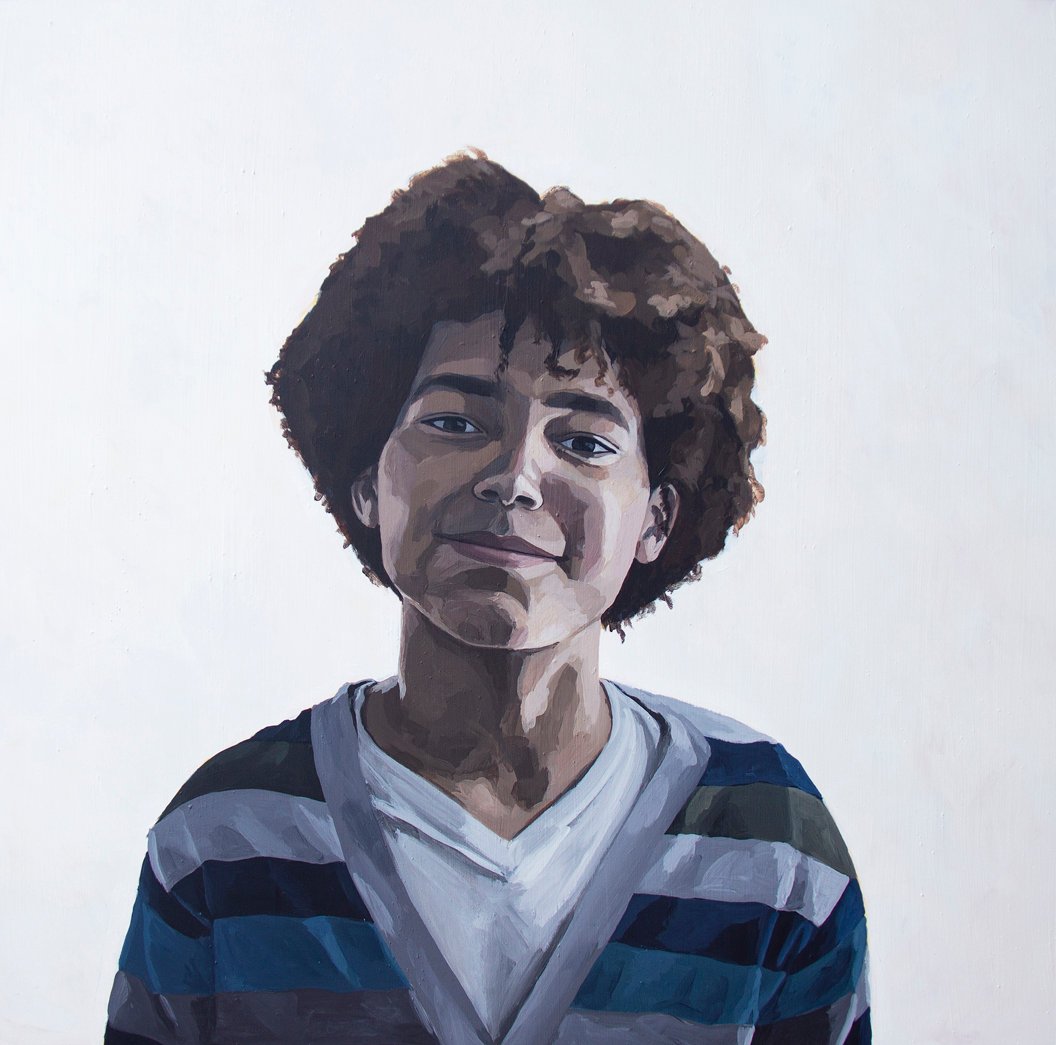
LOV(ed)
Artwork by Jennie Kimbrough.
Opening Reception: October 29th, 5:30pm
Exhibit Dates: October 29, 2021 - January 9, 2022

ILLUMINATE: Shedding Light on Truth Through Art
Since 2017, Fruitful has worked with the Coram Deo creative team to produce 28 unique sermon series illustrations. In Illuminated, Fruitful designers Ben Lueders Erin Pille, ad Nicolas Fredrickson have selected six of their favorite pieces to share the stories behind them.
This show sheds light on the creative process of graphic designers, as well as the thoughtfulness of how this creative team uses imagery to illuminate scripture and message.
ABOUT THE ARTIST: Fruitful Design & Strategy is a local graphic design agency founded in 2013 by Ben Lueders and currently employs a team of seven designers and strategists. Since 2017, Coram Deo Church has partnered with Fruitful to design visual graphics for sermon series as well as many other projects including: “The Daily Liturgy Podcast”, “The Wednesday Conversation” and a full rebrand of Coram Deo Church in 2019.

Reflection: The Psalms
The Christian Scriptures are texts that are meant to be read and meditated on. These holy words are also meant to read us. Like a mirror, reflecting back to us words of God’s character, his conviction, and his comfort.
The Psalms have given words to the songs and prayers of God’s people for thousands of years. And this summer as Coram Deo Church preaches through Psalms 24-32, the people of Coram Deo are showing artwork inspired by these very Psalms.
This exhibit features the art work of all mediums and all ages. We hope that you can come and enjoy these reflections on the Psalms in person at the Coram Deo Gallery!

Proximity: Beauty in the Familiar
Proximity: Beauty in the Familiar is about the place we have called home for over forty years, a place with an expanse of natural beauty that was hidden to me. For many years my heart was unsettled in these surroundings and so much time and energy was wasted looking afar.
Maybe you can relate.
As God has drawn me deeper to himself, he has shown me what it means to be content, and my eyes have been opened to a sense of wonder in the familiar, especially as I look up or around. I believe there is much beauty in this ordinary place. Being vulnerable with my work is at once life-giving and completely draining. If not for the grace of God I am certain I wouldn't be able to paint a thing.
This exhibition is the result of His steady and continuing work in and through me, and I pray His work in me brings good to you.
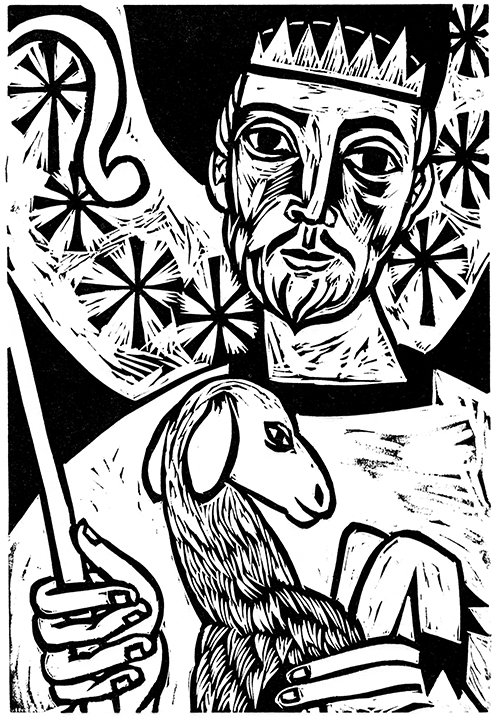
Revealed
The concept of an “illustrated Bible” conjures, for some, soft-focused feathery-winged angels, perfect pairs of well-behaved animals peeking out the ark’s windows, or baby Jesus snuggled into his pint-sized Jenny Lind manger. These cozy images often belie the earthy realism of the Bible’s contents. Revealed shows the Bible in all its raw, violent, and beautiful glory. As J. Mark Bertrand attests, “Revealed sets out to crush any notion that the Bible is a safe, inspirational read. Instead the artwork here . . . takes a warts-and-all approach to even the most troubling passages, trading well-meaning elision for unvarnished truth.”
Revealed features twenty-three works from the book, Revealed: A Storybook Bible for Grown-Ups. This collection of contemporary works, many created by CIVA member artists, features various printmaking techniques and covers the entire story of Redemption—from the Fall in Genesis through the New Creation promised in Revelation. Curated by CIVA graphic designer and creator of Square Halo Books, Ned Bustard, the exhibition includes art by Margaret and Ned Bustard, Tanja Butler, Matthew L. Clark, Wayne L. Forte, Craig Hawkins, David Busch Johnson, Diego Jourdan Pereira, Edward Knippers, Kevin Lindholm, Steve Prince, Mark T. Smith, Justin Sorensen, Ryan Stander, and Kreg Yingst.
